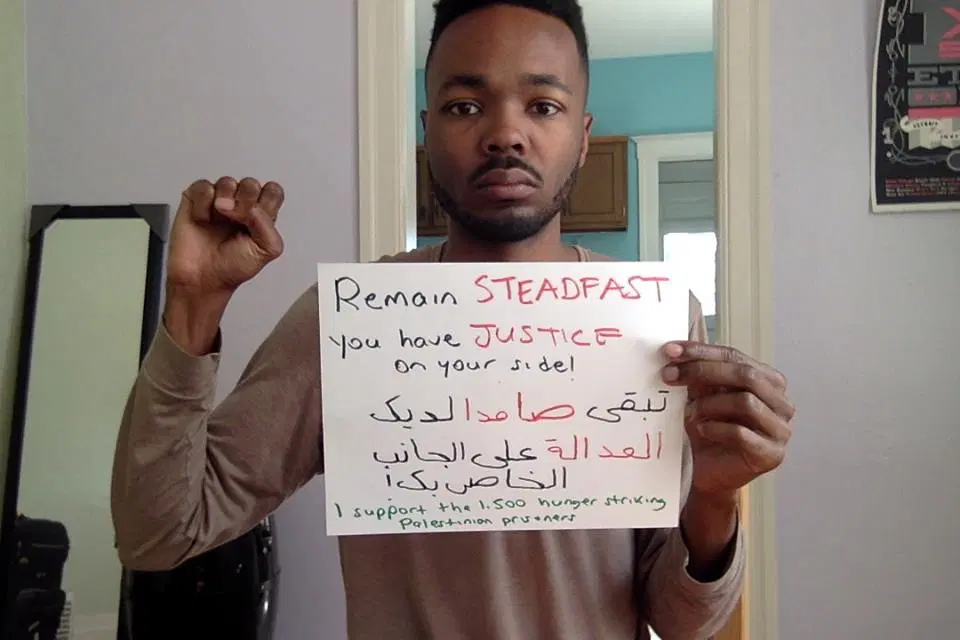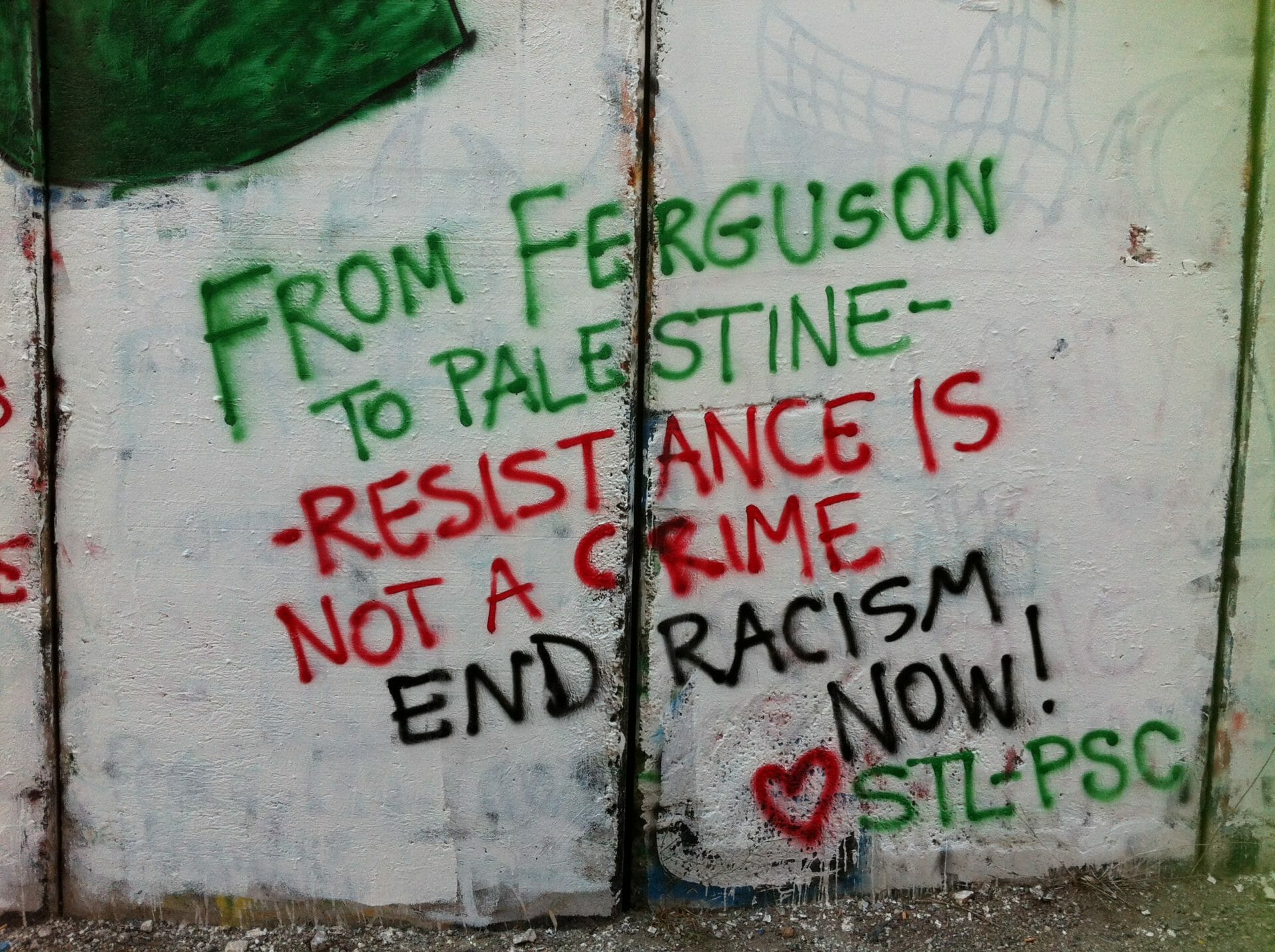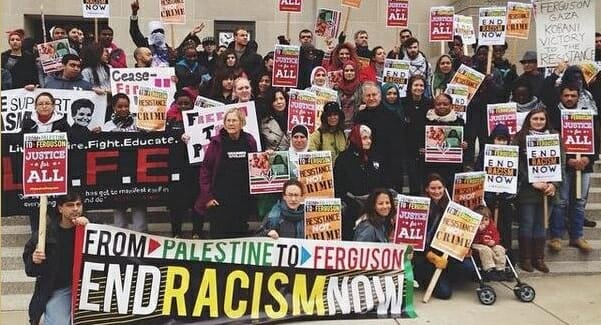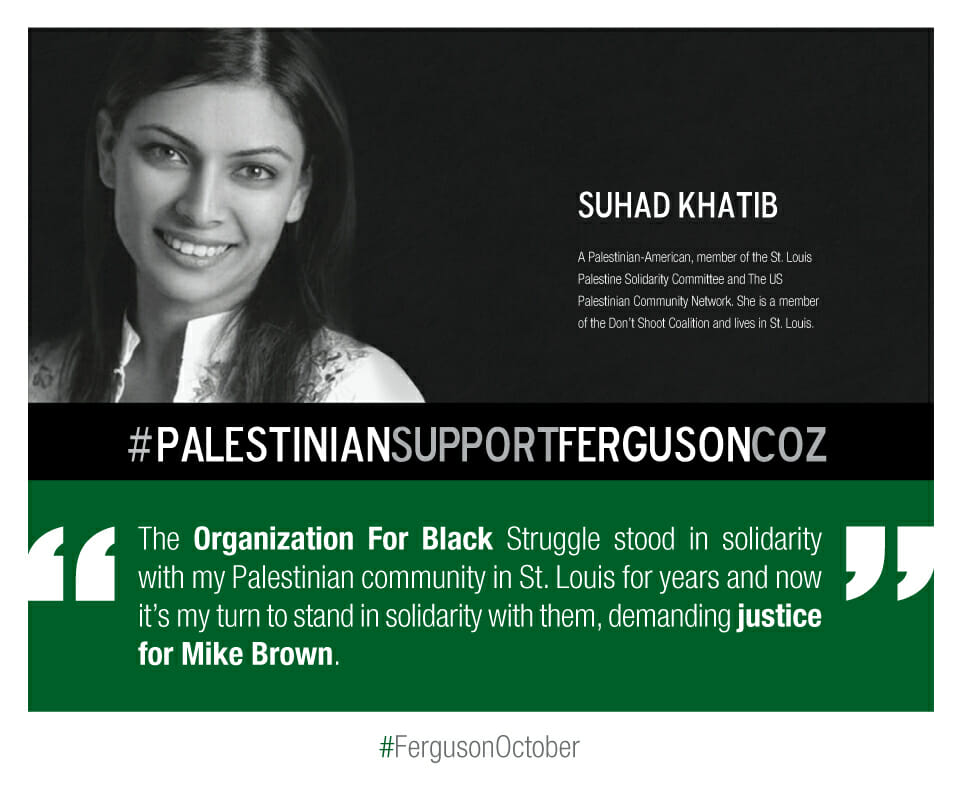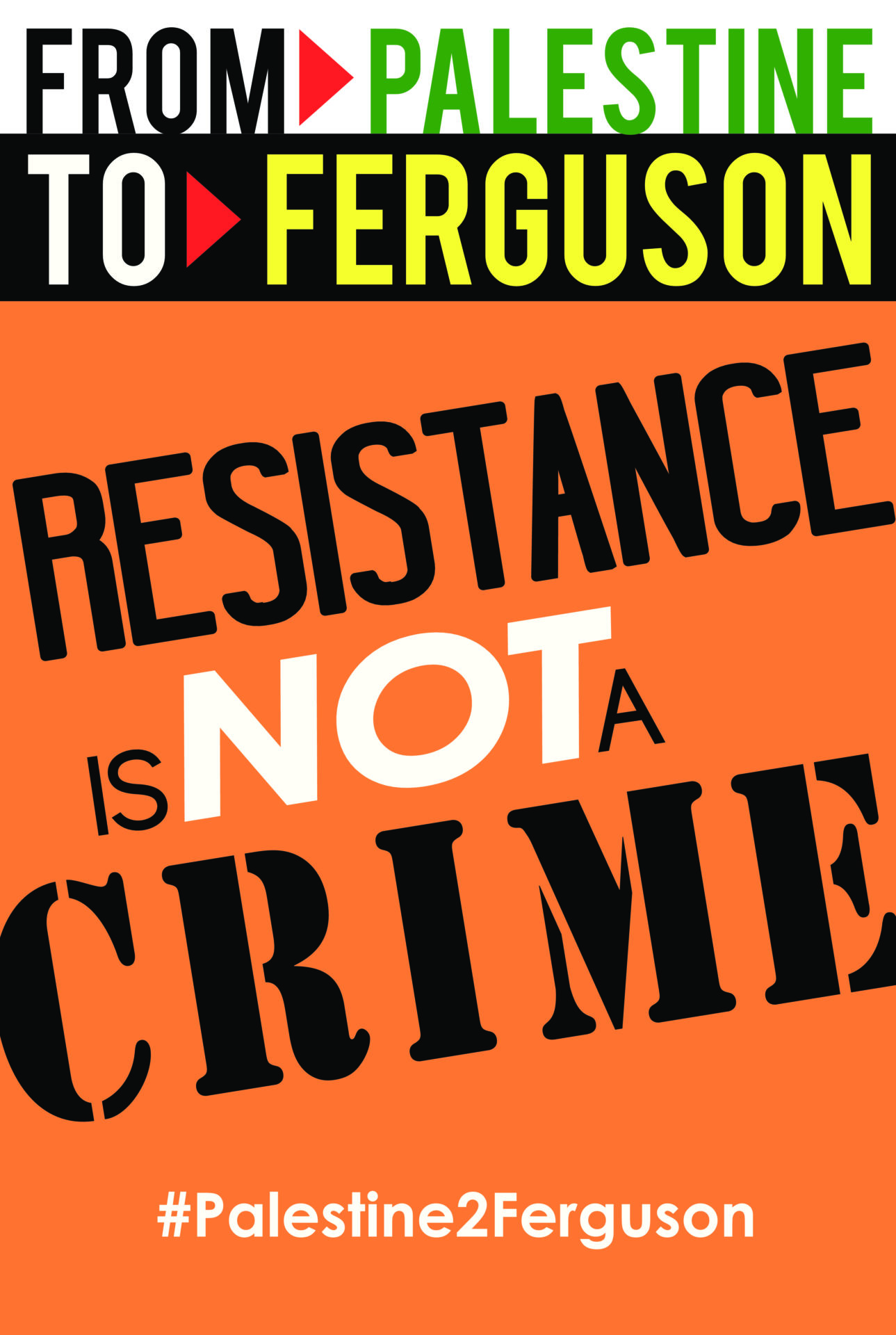Black Palestine Solidarity

On August 9, 2014 Mike Brown was shot and killed in Ferguson, MO by a police officer. His murder and the lack of an indictment against his killer highlighted the epidemic of police brutality and militarization against Black communities in the United States. Mike Brown lifted the Black liberation struggle into the public eye again. Black Lives Matter became a rallying cry across the country and protesters took to the street, often met with militarized police responses and tear gas.
The brutal response of the state to protesters was familiar to Palestinians. Palestinian American activist Bassem Masri, who was very involved in the Ferguson protests, wrote in his piece In Ferguson, I am reminded of Palestine: “On those terrible nights in Ferguson when the police were attacking peaceful civilians with tear gas, Palestinians under Israeli occupation offered advice on how to deal with the effects of the gas. Facing violence from an occupying force, whether in Palestine or Ferguson, forges a mindset that demands resistance and standing up for one’s community. When the police used military tanks and checkpoints to imprison the residents of Ferguson, I was reminded of life in the West Bank where I saw the Israeli military use the same tactics of repression.”
That same summer, Israel had launched yet another military assault on Gaza, killing more than 2,200 Palestinians, including 500 children. As Steve Tamari wrote then: “On my first trip to Ferguson, one day after the worst police violence, I was drawn to a black man waving the Palestinian flag. “Hey, that’s my flag,” I said. Right on cue, he responded, “This is our intifada!” During the first national march on Ferguson on August 30, our banner “Palestine Stands with Ferguson” got lots of attention from residents and supporters. We were deeply moved by our reception.” As events unfolded in Ferguson and photos of the militarized state response to protests were disseminated across the world, Palestinians began sending Twitter messages to activists in Ferguson in solidarity and giving practical advice about how to deal with state repression tactics such as tear gas.
The events of the summer of 2014 rekindled joint struggle efforts between the Black and Palestinian liberation movements that continues to grow. In October 2014 USCPR helped organize a Palestine contingent to the Ferguson Weekend of Resistance as part of our commitment to challenge oppressive structures that sustain injustice anywhere, make clear we that challenging militarization and injustice abroad is incomplete without confronting and dismantling those systems at home in the United States, and to stand against all forms of racism and bigotry.
When I See Them I See Us
From the video project “When I See Them I See Us” released in October 2015: “In the course of resilience against the merciless edge of state-violence, protesters in Ferguson held up signs declaring solidarity with the people of Palestine. In turn, Palestinians posted pictures on social media with instructions of how to treat the inhalation of tear gas. Organically, an analysis emerged highlighting similarities, but not sameness, of Black and Palestinian life, and more aptly, of their survival. This critical moment was built on a rich historical legacy of intellectual production on, as well as movement building between, Black and Palestinian communities. During the Baltimore protests against systemic deprivation and sparked by the murder of Freddie Gray, Palestinians recognized the protests as an uprising and a number of Black protesters renamed their convergence an intifada, bridging the struggles against state-sanctioned violence from the bottom up. Since the devastating attacks on Gaza and in Ferguson, the assault on Black and Palestinian bodies has continued unabated. As we mourn the lives of Tanisha Andersen and Mohammed Abu Khdeir, Ali Dawabshe and Eric Garner, Sandra Bland and Nadeem Nowarah, we are making connections between the systems of violence and criminalization that makes Black and Palestinian bodies so easily expendable.”
In 2015 over 1,100 Black activists, artists, scholars, students and organizations signed a solidarity statement with Palestine: Israel’s widespread use of detention and imprisonment against Palestinians evokes the mass incarceration of Black people in the US, including the political imprisonment of our own revolutionaries. Soldiers, police, and courts justify lethal force against us and our children who pose no imminent threat. And while the US and Israel would continue to oppress us without collaborating with each other, we have witnessed police and soldiers from the two countries train side-by-side. US and Israeli officials and media criminalize our existence, portray violence against us as “isolated incidents,” and call our resistance “illegitimate” or “terrorism.” These narratives ignore decades and centuries of anti-Palestinian and anti-Black violence that have always been at the core of Israel and the US.”

Freedom, Bound is an artistic and historical account of the shared struggle for collective liberation. Inspired by and rooted in the rich legacy of Black-Palestinian solidarity, this multi-media experience considers solidarity both as shared lived reality, and as political choice made time and again throughout history. Through data visualizations and a transhistorical gallery of artifacts, the visitor is invited to consider the inherent interconnectedness and timeless resonance of shared resistance to oppression.
For the Visual Learner
